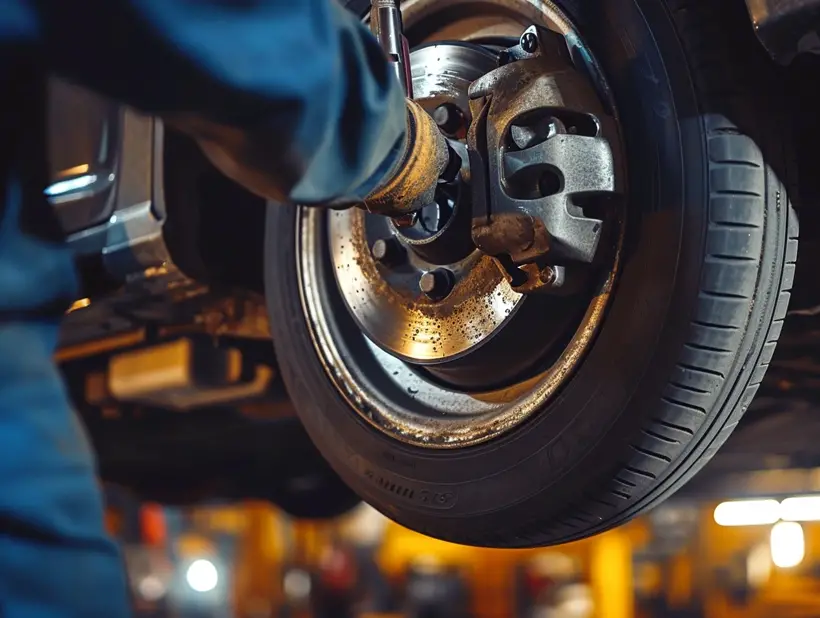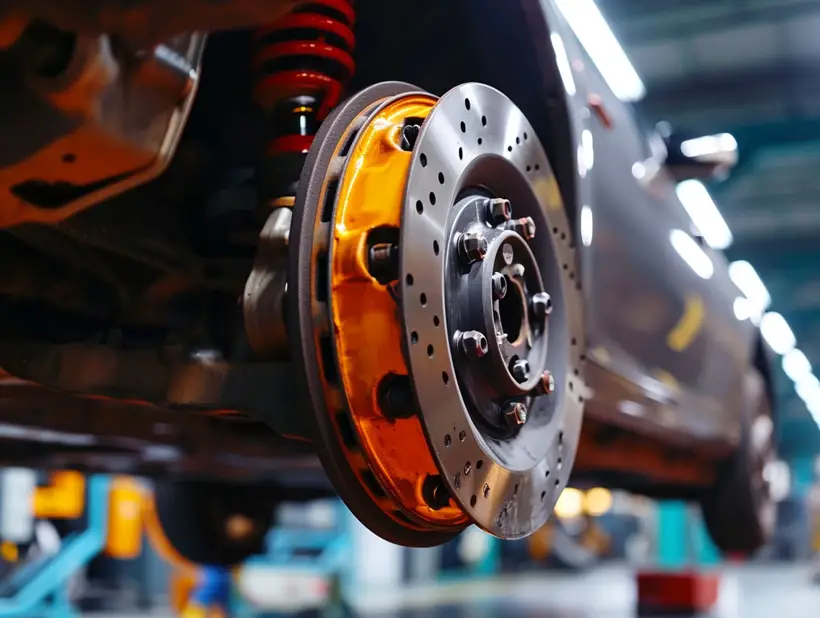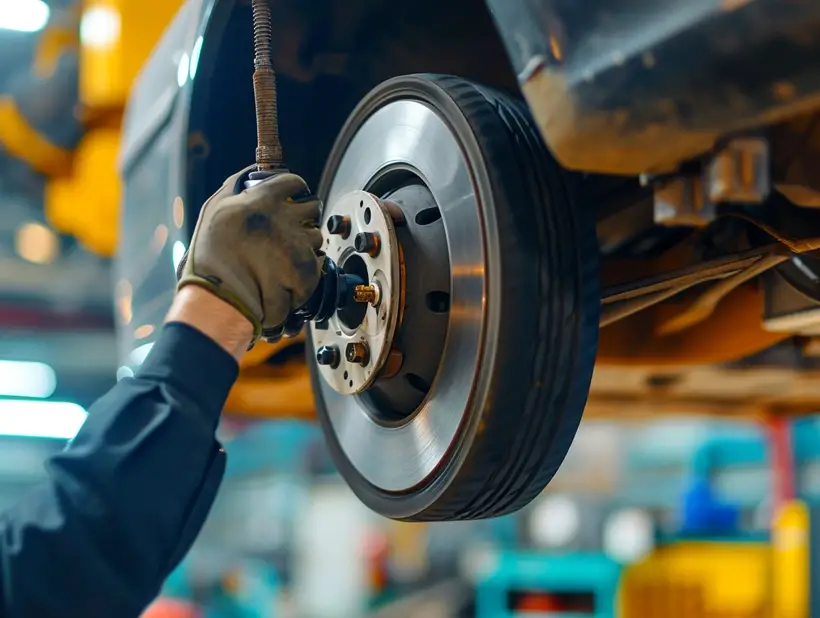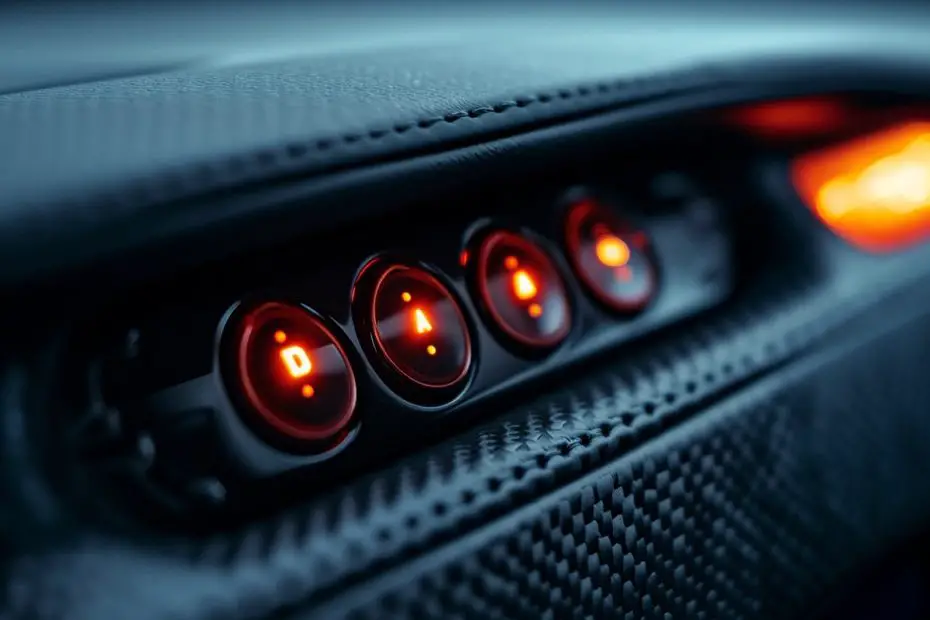When we’re driving and the brake warning light illuminates on the dashboard, it’s a signal we can’t ignore. It’s our car’s way of telling us something’s not quite right with the braking system, and it’s crucial we understand what it means.
We’ve all felt that momentary jolt of concern when a warning light pops up. The brake warning light, in particular, can indicate several issues, from the simple to the serious. Knowing what to look for is key to addressing the problem swiftly and safely.
In this article, we’ll dive into the common causes behind the brake warning light’s appearance. We’ll help you decode what your car is trying to communicate, so you can take the necessary steps to ensure your safety on the road.
Common Causes of the Brake Warning Light
When that brake warning light illuminates on our dashboard, it’s natural to feel a twinge of concern. We’ve learned that this light is more than just an annoyance‚Äîit’s a crucial warning that merits our immediate attention. There are several common causes that can trigger this light, and understanding them helps us address any issues promptly.
- Low Brake Fluid: This is often the primary culprit. Brake fluid is essential for our car’s braking system, providing the necessary hydraulic pressure. If the fluid level drops too low, possibly due to a leak or worn brake pads, the warning light comes on. It’s advisable to check the brake fluid reservoir and top off if necessary. However, if the problem persists, there may be a deeper issue at play.
- Worn Brake Pads: Over time, the brake pads wear down from regular use. Once they reach a certain level of wear, a sensor is triggered, and the warning light switches on. Not only is this an alert for reduced braking efficiency but also a sign that we should schedule a brake pad replacement soon.
- Faulty Sensors: Sometimes, the brake warning light might be a false alarm due to a malfunctioning sensor. Electrical issues can cause the sensor to send incorrect signals, so it’s worthwhile to have a professional inspect the braking system for any electrical faults.

When tackling brake warning light issues, regular maintenance is our best defence. We should always ensure that we’re adhering to the recommended service intervals for brake fluid changes and brake pad inspections. By staying proactive, we maximize our safety and maintain optimal braking performance. Here’s a quick reference table summarizing the common triggers of the brake warning light:
| Brake Warning Light Cause | Likely Issue | Recommended Action |
|---|---|---|
| Low Brake Fluid | Leak or worn pads | Check fluid and pads, repair leaks |
| Worn Brake Pads | Excessive wear | Replace brake pads |
| Faulty Sensors | Electrical issue | Diagnose and repair the system |
Awareness and timely action can prevent a minor issue from escalating into a major one. We should always treat the brake warning light with the urgency it deserves, keeping in mind that our safety on the road is paramount. If these simple checks do not resolve the light, seeking professional assistance ensures we’re not overlooking anything critical.
Low Brake Fluid
One of the most frequent sources of trouble when it comes to the brake warning light is low brake fluid. This fluid is critical for the hydraulic system that enables the brakes to function properly. If we’re experiencing low brake fluid levels, we could be facing a potential brake system failure, so it’s not something to ignore.
Here are common reasons that cause low brake fluid:
- Leaking brake lines: Over time, the wear and tear on brake lines can lead to leaks. These leaks decrease the amount of fluid in the system.
- Worn brake pads: As brake pads wear down, the brake caliper pistons extend further, requiring more fluid to fill the expanded space within the calipers.
- Brake fluid evaporation: Though not as common, brake fluid can evaporate in some extreme cases due to high temperatures and poor maintenance.
It’s fairly simple to check brake fluid levels. We find the brake fluid reservoir under the hood and observe if the fluid is below the recommended levels. Here’s a step-by-step process:
- Locate the brake fluid reservoir on the master cylinder.
- Clean the lid before opening to prevent contamination.
- Check the fluid level against the marks on the side of the reservoir.
- If low, top up with the correct type of brake fluid as specified in the owner’s manual.
It’s vital to use the proper type of brake fluid since different types of fluids cannot be mixed without potentially causing damage to the system, and always replace the lid securely to prevent contamination.
Regular checks are necessary, as brake fluid shouldn’t be low unless there is a problem within the system. If we spot discoloration or cloudiness in the brake fluid, this could be a sign of moisture contamination, which can severely affect braking performance.
If, after topping off the brake fluid, the warning light persists, it’s time to inspect the brake lines for signs of leakage or damage. Since brake fluid is crucial to our safety on the road, we must address these issues promptly.
Remember, brake fluid maintenance isn’t just about the fluid itself‚Äîit’s about ensuring the entire brake system is in good working order. Keeping an eye on brake fluid levels is part of our regular vehicle maintenance routine, helping us spot problems before they escalate.
Worn Brake Pads
When we dive into the symptoms of brake warning light activation, worn brake pads stand out as another key contributor. As part of the brake system’s daily wear and tear, the brake pads thin out over time due to the friction between the pad material and the brake rotors.
Brake pads are essential for creating the necessary friction that allows our vehicles to come to a complete stop. The thickness of these pads is critical, as too little material can lead to decreased braking efficiency and increased stopping distances. It’s paramount that we monitor their condition regularly.

Identifying worn brake pads early can prevent further complications. Here are signs that our brake pads may need a look:
- A squealing or screeching noise when we apply the brakes
- A deep metallic grinding or growling sound
- Our car pulling to one side when braking
- The brake pedal vibrating upon application
The thickness of our brake pads can be visually checked during routing maintenance. Most brake pads have wear indicators that make a high-pitched noise when they reach a critical thinness. It’s wise to inspect our brakes roughly every 10,000 miles or at least once a year to prevent the pads wearing thin enough to trigger the brake warning light.
Here’s a quick guide to the recommended minimum brake pad thickness:
| Vehicle Type | Minimum Thickness |
|---|---|
| Passenger Cars | 1/4 inch |
| Trucks | 1/4 inch |
| Motorcycles | 1/8 inch |
Should we discover that our brake pads are indeed worn, it’s advisable to replace them as soon as possible. Not only will this keep the brake warning light off, it’ll also ensure that our vehicle can stop effectively when we need it to. When replacing brake pads, it’s also best practice to check the rotors for any signs of wear or damage and have them resurfaced or replaced if necessary.
Regular maintenance and timely replacement of brake pads are integral to our safety on the road. Keeping an ear out for unusual sounds and an eye on the brake pad thickness can save us not just from potential hazards but also from expensive repairs down the line.
Faulty Brake Master Cylinder
When delving into the reasons why a brake warning light might illuminate, it’s vital to consider the health of the brake master cylinder. This component is crucial to the braking system as it serves as the main valve that pushes brake fluid through the brake line circuit. But how can you tell if the brake master cylinder is responsible for triggering the brake warning light? Let’s break down the signs and solutions.

A failing master cylinder may manifest in a variety of ways:
- Inconsistent brake pedal behavior: If the brake pedal feels spongy, sinks to the floor, or requires pumping to get a response, the master cylinder might be at fault.
- Contaminated brake fluid: Look for discoloration or a dark, murky appearance in the brake fluid, which can indicate a compromised internal seal within the cylinder.
- Unavailable brake pressure: Difficulty in generating sufficient braking pressure could suggest an issue with the master cylinder.
Identifying problems with the brake master cylinder typically involves:
- Visual inspection: Check for physical signs of damage or fluid leaks around the master cylinder.
- Brake fluid level check: Low levels could hint at leaks, which might originate from the cylinder seals.
- Professional diagnosis: Mechanics can perform a thorough inspection, employing tools and techniques that pinpoint the exact issue.
Monitoring your vehicle’s brake system performance is essential. Any irregularity in the braking experience should be inspected without delay to avoid jeopardizing safety. Regular upkeep, including inspections of the brake fluid and its components, is indispensable. Should you encounter any of the symptoms mentioned, it’s advisable to seek expert attention. Understanding the complexities of the master cylinder and its role in your vehicle’s braking system could save you from potential hazards and maintain your car‚Äôs optimal performance on the road.
Brake System Leak
When tackling the issue of the brake warning light, one critical aspect we must address is the possibility of a brake system leak. This problem can be as straightforward as a loose fitting or as severe as a ruptured line, and it’s crucial for us to understand the consequences and identifying traits of this condition.
Leaks within the brake system can occur at various points:
- At the brake lines which carry brake fluid throughout the system
- Within the wheel cylinders that are part of the drum brakes
- Inside the brake calipers found in disc brake setups
- At the connections and junctions where these parts meet
It’s evident that leaks manifest through noticeable Fluid Pools under the vehicle or along the trajectory of our drive. Brake fluid is typically clear to brown and has an oily consistency. Spotting these leaks early is vital since they can lead to a loss of brake pressure and ultimately, brake failure.

Spotting these signs warrants action on our part:
- A Soft Brake Pedal that depresses more easily than usual
- Visual Fluid Loss in the brake fluid reservoir
- A brake pedal that feels Spongy or Unresponsive
Upon identifying a potential leak, it’s advisable to check the integrity of the brake lines and component seals. It’s especially important to inspect areas that are subject to high stress or wear, including the following:
- Near the wheels where debris and road salt can corrode brake lines
- Where clamps or holding fixtures secure the lines, as these can become compromised over time
Should we discover any signs of damage or wear, these parts must be repaired or replaced immediately. It’s crucial to ensure all repairs are performed to avoid further degradation and assure our safety on the road.
It’s important for us to regularly monitor the condition of our vehicle‚Äôs brake system. The brake lines, calipers, and cylinders should be included in routine inspections to guard against undiscovered leaks that could lead to more serious issues. We must keep a watchful eye for any telltale signs of fluid loss or system compromise in order to maintain the effective operation and reliability of our brakes.
ABS Malfunction
When tackling the reasons behind a brake warning light, it’s essential to include the possibility of an ABS (Anti-lock Braking System) malfunction. The ABS plays a critical role in maintaining control during an emergency stop by preventing the wheels from locking up. A fault in this system can activate the brake warning light.
The first indicator of an ABS issue is usually the illuminance of a specific ABS warning light, separate from the regular brake warning light. If this light turns on, it may signal a malfunction within the system. Here’s a brief rundown of potential ABS issues:
- Faulty ABS sensors: These sensors monitor wheel speed and control braking pressure. A failure can lead to incorrect signals sent to the ABS, triggering the light.
- Damaged wiring or connectors: Wires or connectors leading to the ABS may become damaged due to wear and tear or environmental exposure, interrupting the system’s operation.
- ABS module problems: The module commands the system based on sensor inputs. Malfunctions here could compromise the entire ABS functionality.

We also need to consider potential problems with the ABS hydraulic valves or pumps that can lead to system errors. Regular system diagnostics using a proper scan tool can pinpoint these complex issues. In addition, it’s prudent to regularly check the following:
- Sensor cleanliness and alignment
- Condition of ABS-related fuses
- Reliability of ABS module connections
Maintaining this vital safety feature requires attention to detail and, at times, professional intervention. Neglecting an ABS malfunction not only risks the overall effectiveness of your brake system but also compromises safe driving. Remember, an optimally functioning ABS is imperative, especially under harsh braking conditions.
Notably, some vehicles will disable the ABS when a fault is detected, reverting to conventional brakes. While these brakes should function, without the ABS, vehicles are more prone to wheel lock-up during sudden stops, reducing the ability to steer away from potential hazards.
For drivers noticing an ABS warning light, a trip to a certified mechanic for a comprehensive evaluation is the best course of action. The intricacies of the ABS require a skilled hand for repairs to ensure all components are in sync and meet the manufacturer’s specifications. Regular brake system assessments during scheduled service visits help prevent unexpected malfunctions, keeping your ABS in check and ready to perform when you need it most.
Conclusion
We’ve explored the various reasons your brake warning light might illuminate, from low brake fluid to ABS malfunctions. It’s clear that staying on top of brake maintenance isn’t just about avoiding costly repairs‚Äîit’s crucial for our safety on the road. Let’s make sure we address any brake warning signs promptly and trust the expertise of professionals to keep our vehicles in top condition. Remember, when it comes to braking systems, proactive care is always better than reactive repairs. Drive safe, and never ignore your brake warning light.
